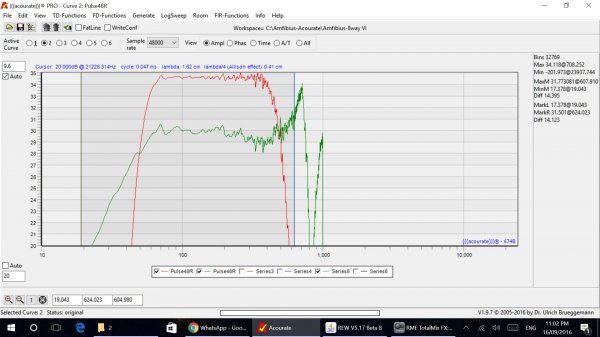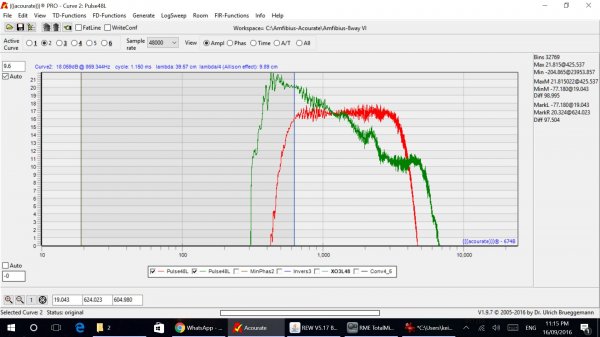A quick count of the resolution of an i Phone is that it cuts the 20hz - 20 kHz range into around 60 measuring points , 30 of them being under 550 hz, this is a very poor/ rough measurement , and taking conclusions on that is doubtfull imo , it gives only a rough impression
Andromedaudio and user 211,
You are both correct. The tool that I'm using is not nearly as accurate as a calibrated test mic and recorder. But if neither of you have compared the exact program and tool that I generally use for "quick and dirty" measurement to some specific reference gear, than your argument is less powerful. In fact, I have compared it to several calibrated microphones and for my purposes, its just fine. i don't need something to be accurate to 0.1dB. What I'm looking for is an instrument that identify large deviations of >5dB very easily, and the iPhone/Analyze program is more than able to perform that function. It provides guidance, nothing more. But it is remarkably powerful and portable and therefore useful. In addition, one of the first things one learns in science is the difference between accuracy and precision (repeatability). It does an adequate job in both which is also beneficial. This is a good example of "perfect is the enemy of good". Indeed it isn't perfect, nor is it the last word in accuracy as you correctly point out. However, in this case, its a useful tool and more than good enough for my purposes.
Marty



